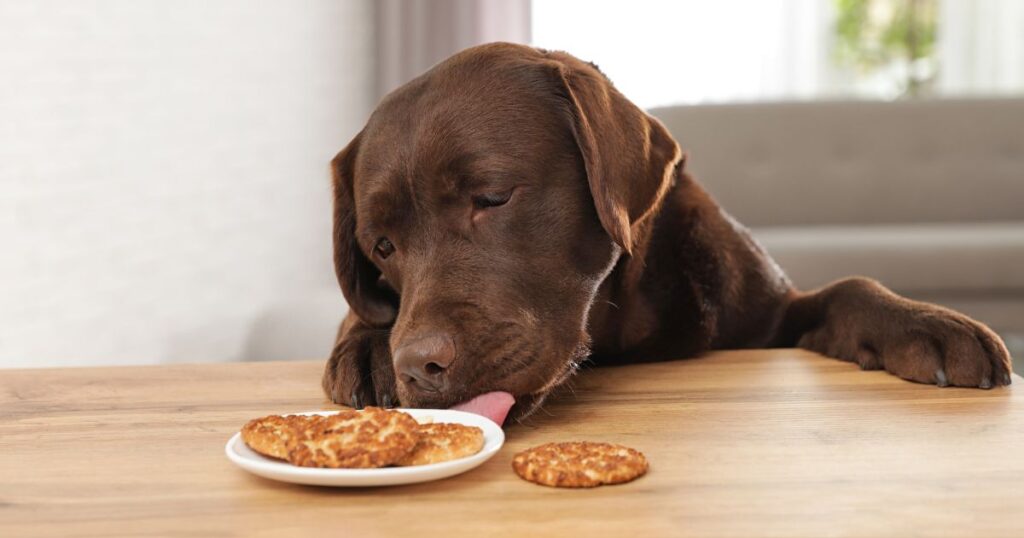
Properly nourishing your Labrador puppy is key to ensuring they grow up healthy and full of energy. As new dog parents, understanding the dietary requirements of these friendly pups is crucial. Knowing the right amount, frequency, and type of food to give your furry friend can have a big impact on their overall health and happiness. When it comes to feeding Labrador puppies, starting them off with kibble is a popular choice due to its convenience and shelf life. The quantity of food needed for your Lab will depend on factors like their age, size, and the specific food you are providing. Puppies younger than three months old typically require three to four meals a day, while those between three to six months may need three to five feedings daily. Once your puppy reaches six months and beyond, feeding them twice a day is generally recommended. Following proper feeding guidelines is vital for your Labrador puppy’s well-being. Considering their individual needs and ensuring they receive the right amount of nutrients will help them thrive and lead a happy and healthy life. By taking good care of their diet, you can set your furry friend up for a lifetime of tail-wagging joy.
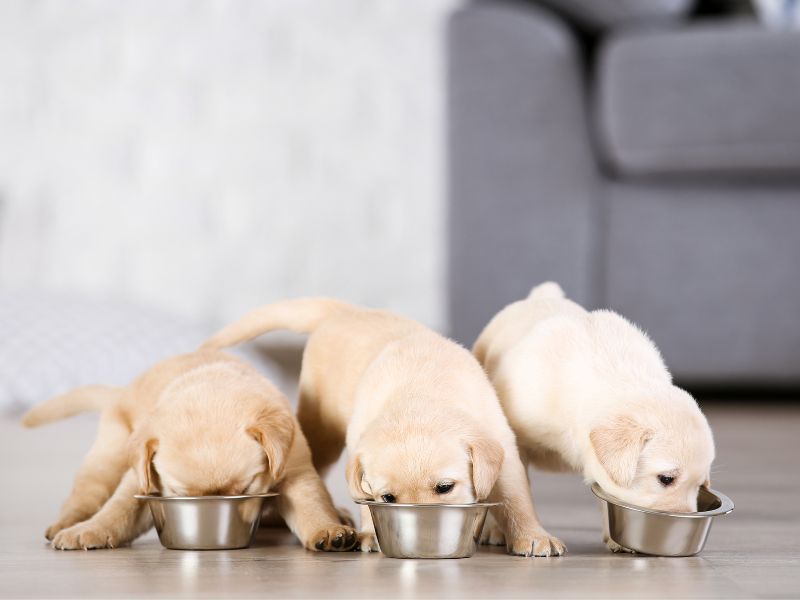
One way to nourish your Labrador puppy is by feeding them kibble, which is a popular choice among many puppy owners. This dry dog food comes in convenient, biscuit-like pellets that are packed with essential nutrients. It’s easy to buy, store, and feed, making it a hassle-free option for busy pet parents. However, some puppies may not find kibble as tasty as other food options, so it’s essential to consider your puppy’s preferences when choosing their diet. Just like with any feeding method, it’s crucial to consult with a vet to ensure you’re providing the right balance of nutrients for your growing Labrador pup.
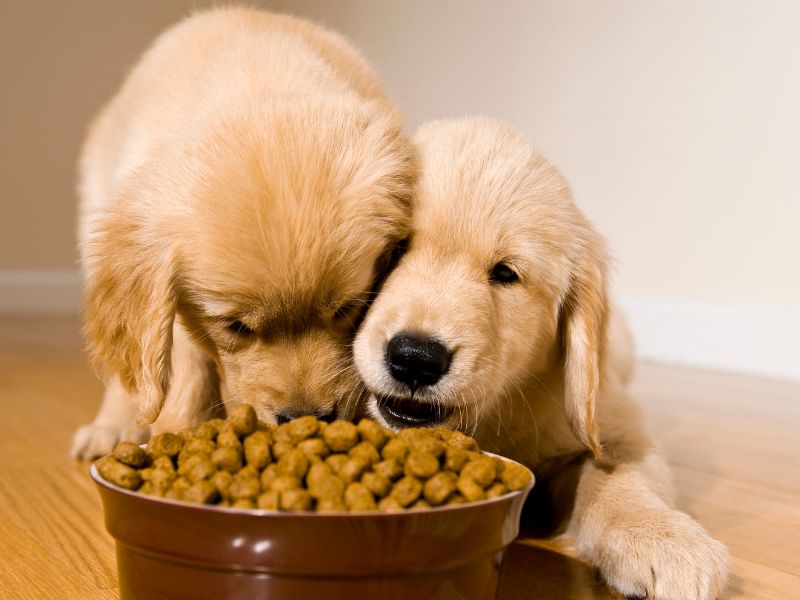
Labrador puppy owners often opt for kibble as a convenient and balanced diet choice. It is a ground-up food that is shaped into pellets, making it easy to serve and store. When selecting kibble for your puppy, make sure to choose a high-quality formula suitable for their age. Different brands offer puppy-specific formulas tailored to the needs of growing dogs. The recommended daily amount of kibble varies based on your puppy’s weight, with guidelines provided for Labradors weighing 40-65 pounds. It is best to split these portions into several meals throughout the day to accommodate their smaller stomachs. Properly storing kibble in an airtight container is essential to preserve its freshness and prevent moisture. Feeding your Labrador puppy with kibble can be a practical and nutritious choice, as long as you choose the right formula and adjust the amounts according to your puppy’s growth. In addition to kibble, it is important to provide your puppy with a varied and balanced diet. Consult with your vet before introducing any new foods, such as wet food, raw food, or supplements. Wet food can offer additional nutrients and hydration, while raw or home-cooked meals can provide a range of nutrients and flavors. Supplements and treats can support your puppy’s health and development, but make sure to choose wisely and in moderation.
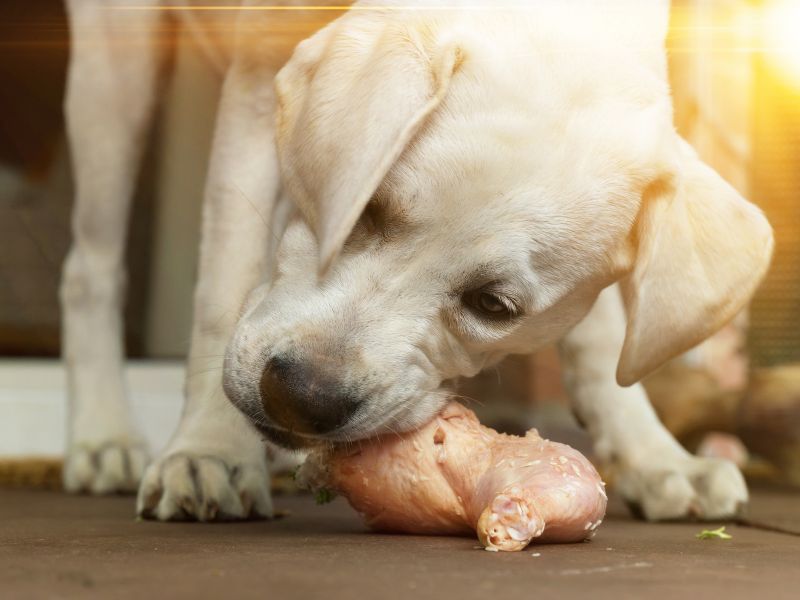
Labrador puppies over 6 months old can be fed 2-3 meals daily with a mix of dry and wet food. It’s important to monitor their weight and adjust the portion sizes as needed to prevent overfeeding or underfeeding. Additionally, always ensure that fresh water is available for the puppy throughout the day to keep them hydrated. By following these feeding guidelines, pet owners can help their Labrador puppy grow up healthy and strong.
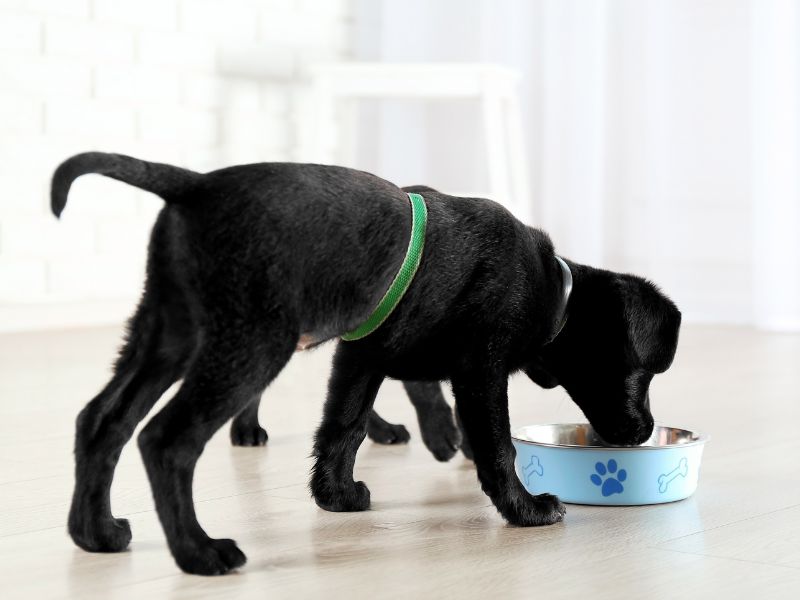
As your Labrador puppy reaches 6 months old, you can switch their feeding schedule to twice a day. It’s important to make sure they are getting all the necessary nutrients in their adult diet. Overfeeding your puppy can lead to health issues such as obesity and rapid growth, so be cautious and follow feeding guidelines. Keep an eye on their weight and overall health to ensure they are thriving. Feeding a Labrador puppy requires attention to detail, as their nutritional needs vary with age, size, and activity level. A rough feeding chart can help guide you, but adjustments may be needed based on your puppy’s individual requirements. Monitor their body condition and consult with a vet for personalized advice. Choosing the right brand of puppy food is crucial for your Labrador’s well-being. Consider factors like cost, quality, and availability when making your selection. Some recommended options include Royal Canin, Wellness, Hill’s Science Diet, and Pedigree. Research each brand and read reviews to find the best fit for your furry friend.
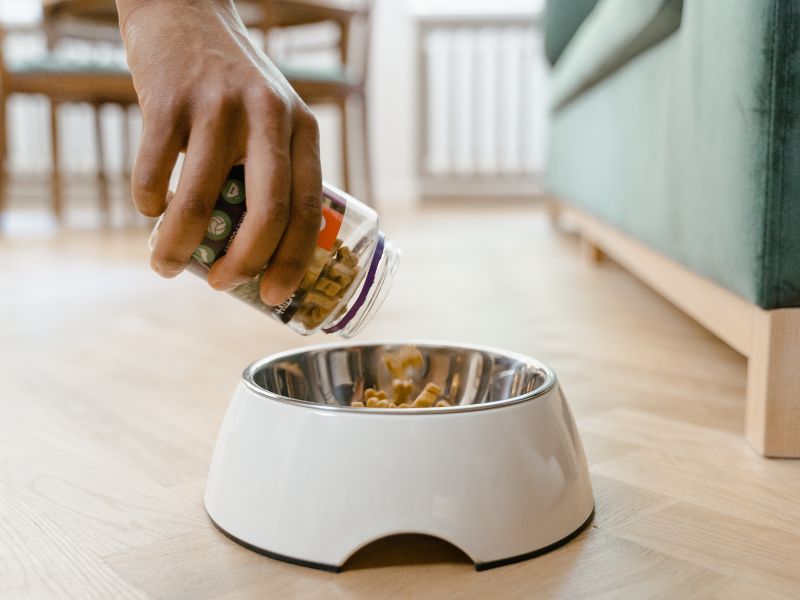
Selecting the appropriate food and water bowls for your Labrador puppy is crucial for their overall health and well-being. Opt for bowls that are sturdy, easy to clean, and are the right size for your puppy’s needs. Stainless steel or ceramic bowls are great options as they are durable and easy to sanitize. Additionally, consider using raised bowls to help prevent neck strain and aid digestion, especially for larger breed puppies like Labradors. Overall, choosing the right feeding location and bowls can create a positive feeding experience for your furry friend and promote healthy eating habits.
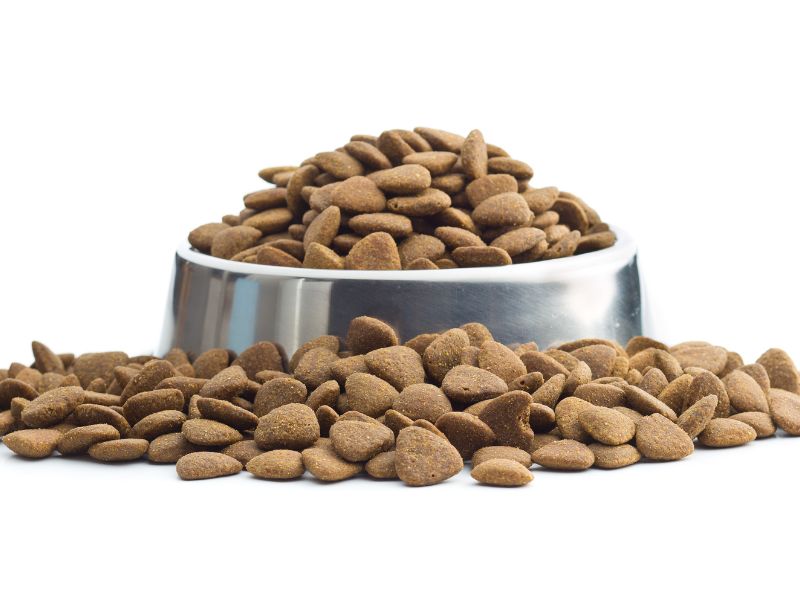
Choosing the right food and water bowls for your Labrador puppy is crucial for their mealtime experience. When selecting bowls, consider factors such as material, size, depth, and a non-slip base to ensure your puppy’s comfort and ease during feeding. Stainless steel bowls are recommended for their durability and easy cleaning, while plastic bowls should be avoided due to potential bacteria growth and allergic reactions in puppies. As your Lab grows, be sure to increase the bowl size accordingly to accommodate their needs. To prevent spills and movement during mealtime, opt for bowls with a rubber or silicone base for added stability. Creating a comfortable and consistent feeding environment is essential for your Labrador’s well-being. Pippa Mattinson, a renowned Labrador specialist with over 40 years of experience, provides valuable tips on feeding and training Labradors. Her expertise covers a wide range of topics including potty training, crate training, basic commands, and food choices for Labrador puppies. For a successful mealtime regime, follow Pippa’s advice on kibble storage in a food-grade airtight container to maintain freshness. Labrador owners can benefit from Pippa’s free training tips via email, offering actionable steps for immediate implementation. Ensuring your Labrador puppy maintains a healthy weight is crucial for their overall health. Monitor their food intake, choose high-quality puppy food, gradually increase portions if underweight, feed at consistent times, and consult a veterinarian if weight concerns persist. By following these guidelines and seeking professional advice when needed, Labrador owners can ensure a happy, well-trained, and healthy puppy. Stay informed and connected with Pippa Mattinson’s valuable guidance for a strong foundation in raising your Labrador.
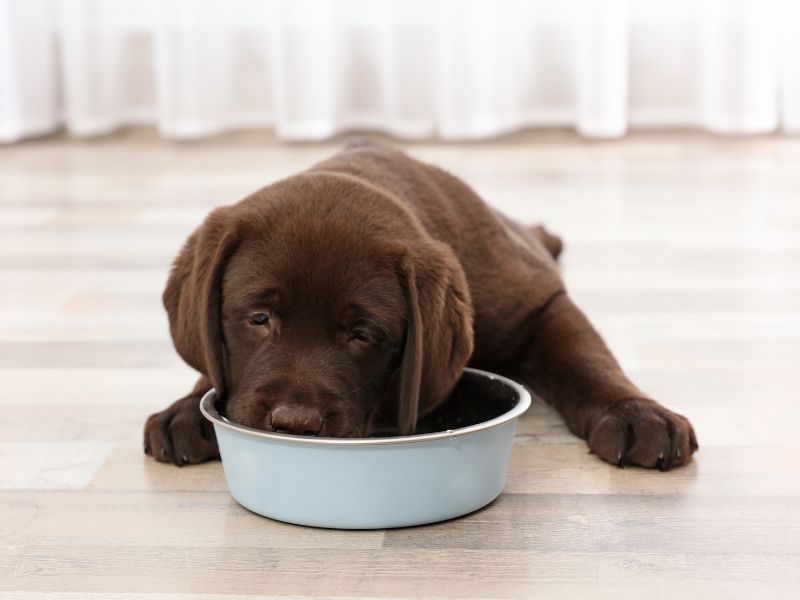
If you find that your Labrador puppy is still hungry after their meals, it’s important to resist the urge to overfeed them. Instead of increasing portion sizes, consider if their current food is providing enough nutrients or if they may benefit from a higher quality, more filling option. You can also try adding low-calorie snacks like carrots or green beans to help satisfy their hunger without adding unnecessary calories. Be sure to consult your vet if you have concerns about your puppy’s appetite or dietary needs. By keeping an eye on their feeding habits and providing them with a balanced diet, you can ensure that your Labrador puppy grows up healthy and strong.

As Labrador puppies grow, they may show signs of increased hunger even after eating. This can be concerning for pet owners, but there are ways to address this issue. One method is to divide their daily food allowance into smaller, more frequent meals to prevent them from feeling excessively hungry between feedings. For example, Eukanuba Adult Breed Lamb and Rice dog food recommends specific feeding amounts based on the Lab’s weight. By splitting the daily portion into three or four smaller meals throughout the day, you can help your puppy feel more satisfied. Another helpful tool is using slow feed dog bowls to slow down your puppy’s eating pace. These bowls feature obstacles that force dogs to eat more slowly, which can prevent overeating and promote healthier eating habits. Additionally, they can help reduce the risk of digestive issues like bloating or indigestion. Monitoring your puppy’s growth and appetite is crucial, and consulting a veterinarian if you notice any significant changes is important. It’s especially important to transition a Labrador puppy from wet food to kibble around 10 weeks of age for proper nutrition. If your puppy shows signs of not eating, consult your vet to rule out underlying issues like stress or illness. If your puppy seems uninterested in their food, warming it up slightly or adding water to the kibble can make it more appealing. Additionally, incorporating yogurt, cottage cheese, or a stinky canned product with high meat content can entice your puppy to eat. Storing dry food properly in an airtight container is also important to maintain freshness. While milk can be given in small amounts, it should not be a primary food source due to its high sugar content. Overall, consulting with your vet and following their guidance, along with using these strategies, can help ensure your Labrador puppy maintains a healthy appetite and receives the proper nutrition.
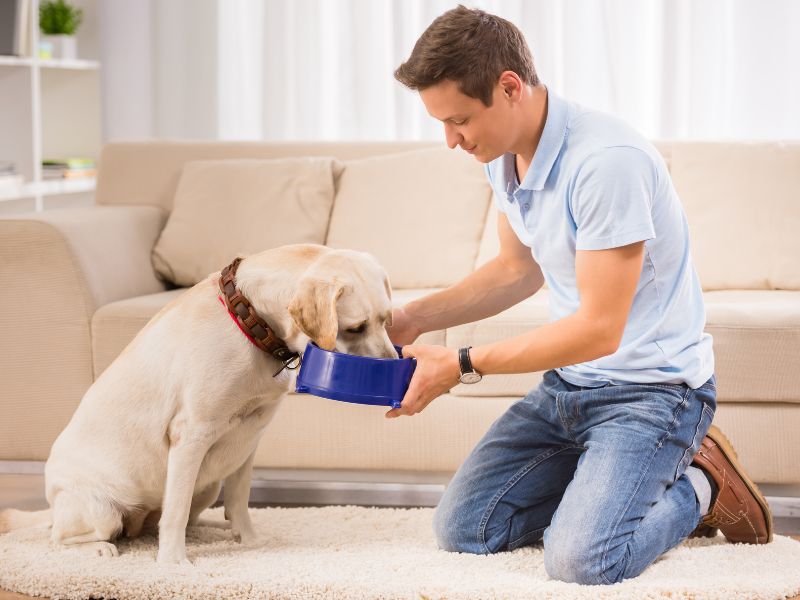
As Labrador puppies grow, their dietary needs evolve, so it’s important to switch from puppy food to adult food at the right stage. This typically happens when they are about 80% of their expected adult size, usually around 9 to 12 months old. Puppies require more protein and calories than adult dogs to support their growth spurt, which is why puppy food has higher levels of these nutrients. Adult food, on the other hand, has lower calorie content to suit a more relaxed lifestyle and prevent weight gain. When transitioning your Labrador puppy to adult food, it’s best to do so gradually to avoid digestive issues and help them adjust to the new diet. You can follow this sample feeding plan: Days 1 to 2: 3/4 puppy food, 1/4 adult dog food Days 3 to 4: Half puppy food, half adult dog food Days 5 to 7: 1/4 puppy food, 3/4 adult dog food Days 8 to 10: Adult dog food only If your puppy shows signs of sickness during the transition, stop the adult food and talk to your vet. It’s crucial to monitor your dog’s health and weight during this process to ensure they’re adapting well. Additionally, keep an eye out for signs of rapid growth, as transitioning too soon can lead to joint and bone issues. It’s always a good idea to seek personalized advice from your vet when deciding the right time to switch your Labrador puppy to adult food. When changing between dog food brands, it’s important to do so gradually over a week or two. This can help prevent stomach upset and ensure a smooth transition. Follow this guideline: Day 1: 10% new food, 90% old food Day 2: 20% new food, 80% old food Day 3: 30% new food, 70% old food … Day 10: 100% new food Remember to adjust the transition period to suit your puppy’s needs. Consult your vet if you have any concerns about the new food. Different dog food brands offer various diets, so consider your puppy’s needs and speak to your vet before making any major changes. Incorporating different foods into your Labrador puppy’s diet, like kibble, wet food, raw food, or home-cooked meals, can provide essential nutrients. Adding variety to your puppy’s diet, such as hand-feeding and using healthy treats in training, can enhance mealtime and strengthen your bond. Choose treats like lean meat, fruits, peanut butter, cheese, or yogurt, and limit their intake to maintain a balanced diet. Training with treats can keep your puppy engaged, socialized, and mentally stimulated while promoting healthy eating habits.


